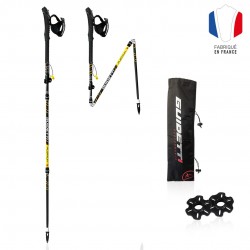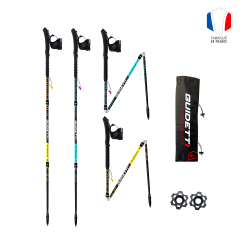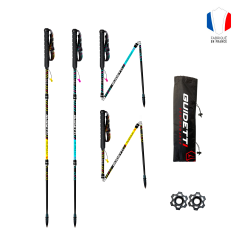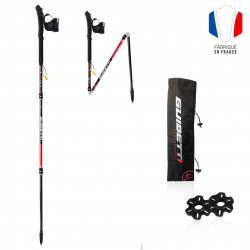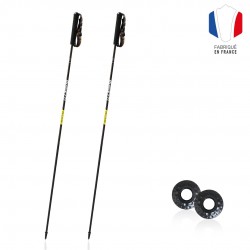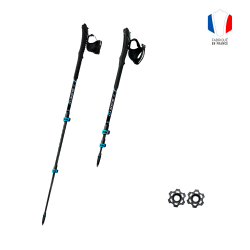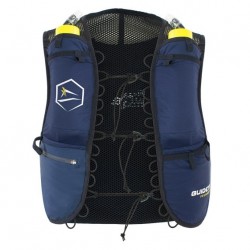Mickaël Morillon takes 3rd place on the Annapurna Mandala Trail in Nepal

Mickaël is a professional sports coach, an Athletics Health coach with the FFA (French Athletics Federation), a Nordic walking instructor, and a sports enthusiast of all kinds! Since 2008, he has dreamed of participating in the Annapurna Mandala Trail. He has done so, having participated in the twentieth and final edition, which took place from October 21 to November 8 in Nepal. He tells us about this incredible sporting and human adventure.
What is the Annapurna Mandala Trail?
The Annapurna Mandala Trail is an iconic event in the Himalayas. This final edition, called The Last Mandala for the occasion, took place around Dhaulagiri, before concluding in Mustang, with the final difficulty, the Thorong Pass (5,420 m). Two other passes over 5,000 m were on the program, the French Pass (5,360 m) and the Thapa Pass (5,250 m).
With five days in the high mountains, at an average altitude of 5,000 m, The Last Mandala was more Sky race oriented than Trail running. For five days, in the heart of the Nepalese Himalayas, the competition became an expedition, in order to climb Dhampus Peak (6,020 m). However, the roped party had to turn back 200 m from the summit, due to a snowdrift.
The race was 160 kilometers (+15,000 m) and six timed stages.
You finished 3rd, what an achievement!
Indeed! The race was won by Nepalese Sher Tharu, ahead of American Liam Clancy, and I finished just behind in 3rd place.
In the women's race, victory went to Nepalese Padam Kumari Sunuwar, who led the overall standings after the first three stages. But a sprain forced the young Mira Raï student (22 years old) to slow down. Frenchwomen Mélanie Ringeval and Virginie Duterme completed the podium.
Which trail poles did you use?
For this 11-stage adventure in Nepal, I chose Guidetti Platinium Flexo trail poles. They were my daily traveling companions! Ultralight, 100% carbon, they were indispensable to me.
They allowed me to lighten the weight of my body and my 12 kg backpack, especially in technical sections, scree slopes and on snow. They also allowed me to be more efficient on the elevation changes (15,000 D+ over 160 km).
Furthermore, the upper strand is adjustable so it allowed me to adjust the height of the pole according to the slope and my needs.
During my preparation, I hesitated for a long time between a wrist strap and a gauntlet. After several field tests and taking into account the rather "trail hiking" context and the altitude (5 passes at over 5000 m and an ascent to 5850 m), the choice of the detachable gauntlet was the right one for this Himalayan adventure.
As an Athletics Health Coach at the FFA and a Nordic walking coach, the technique with the gauntlets (ascents and descents) helped me a lot. Thanks to the Guidetti team for this partnership!
What do you remember from this experience?
In this Himalayan expedition, I will remember above all the kindness and dedication of the Nepalese porters. It was an incredible adventure, with exceptional weather, especially in the very challenging areas of Dhaulagiri. And even if the language barrier is present, the looks do not deceive and friendships with the Nepalese have been created.
Knowing how to be content with small needs, managing one's efforts in the cold and hypoxia, living in the present moment without communication with the outside world, contemplating, marveling, crying, sharing, surpassing oneself, being oneself, without a filter because in the depths of effort, one no longer cheats with appearances. All this has been my daily life and I have learned a lot.
> To learn more about this adventure, watch the video produced by Ouest France.
.jpg)


